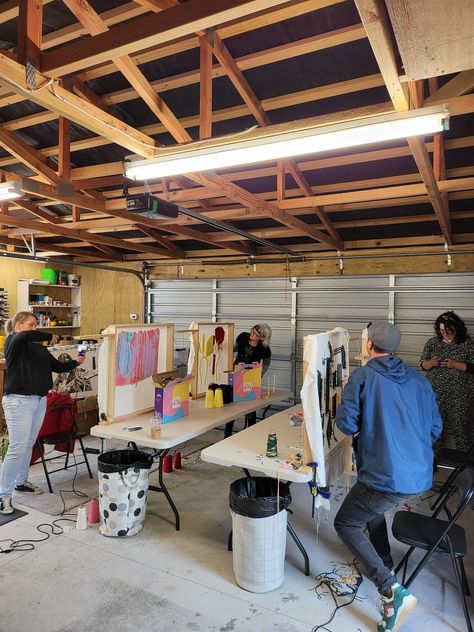Rug tufting cloth is a fundamental component in the manufacturing process of high-quality carpets and rugs. It serves as the base layer onto which the yarn or tufts are inserted during the tufting process. This cloth plays a crucial role in ensuring the structural integrity, durability, and overall performance of the finished product. This article will help you understand what rug tufting cloth is, the purpose and characteristics of rug tufting cloth, the materials used in rug tufting cloth, and the importance of rug tufting cloth.
What Is Rug Tufting Cloth
Rug tufting cloth, also known as a primary backing fabric, is specially engineered for tufted carpets and rugs. It is designed to securely hold the tufts in place and provide dimensional stability to the carpet structure. The primary tufting cloth is typically lighter and more flexible than other fabrics used in tufting processes.

Purpose And Characteristics
The primary purpose of rug tufting cloth is to act as a stabilizer, giving the carpet or rug the necessary strength and structure. It prevents the tufts from pulling out or shifting, ensuring the longevity of the product. The characteristics of the tufting cloth contribute to the overall quality and performance of the carpet.
- Strength and Stability: Rug tufting cloth offers excellent strength and stability, providing a solid foundation for the tufted yarn.
- Dimensional Stability: The cloth helps maintain the shape and size of the carpet, preventing it from stretching or distorting over time.
- Secure Tufting: By securely holding the tufts in place, the cloth prevents them from loosening or unraveling.
- Flexibility: The tufting cloth possesses a degree of flexibility, allowing the carpet to be easily manipulated and shaped during the manufacturing process.
Materials Used In Rug Tufting Cloth
Several materials are commonly used in the production of rug tufting cloth. The choice of material depends on factors such as the desired characteristics, aesthetics, and the specific application of the carpet. The most commonly used materials include:
- Synthetic Fiber: Synthetic materials like polypropylene and polyester are widely used due to their durability, affordability, and resistance to moisture and stains.
- Cotton: Cotton is a natural material that offers excellent flexibility, softness, and breathability. It is often chosen for its comfort and natural aesthetic appeal.
- Wool (less common): Wool fibers, although less common, provide exceptional durability, resilience, and natural flame resistance. Wool-based tufting cloth can offer luxurious textures and superior insulation properties.
Importance Of Rug Tufting Cloth
Rug tufting cloth is of paramount importance in the manufacturing of high-quality carpets and rugs. Here’s why it matters:
- Structural Integrity: The tufting cloth provides the necessary structural integrity, ensuring that the carpet retains its shape and structure over time.
- Durability and Longevity: By securely holding the tufts in place, the cloth enhances the durability and longevity of the carpet, making it resistant to wear and tear.
- Enhanced Performance: The stability and strength offered by the tufting cloth contribute to the overall performance of the carpet, providing a comfortable and long-lasting flooring option.
- Customer Satisfaction: Quality carpets and rugs produced using reliable tufting cloth materials satisfy customers’ expectations in terms of aesthetics, comfort, and durability.
Conclusion
In conclusion, rug tufting cloth is an essential component in the production of carpets and rugs. Its strength, stability, and ability to securely hold tufted yarn contribute to overall quality, durability, and customer satisfaction. By understanding the purpose and characteristics of rug tufting cloth, manufacturers can make informed decisions to produce carpets that meet the highest standards of quality and performance.
FAQs
Is rug tufting cloth the same as monks cloth?
No, rug tufting cloth and monks cloth are different fabrics used in various textile crafts. Rug tufting cloth is specifically designed for tufted carpets and rugs, while monks cloth is commonly used in Swedish weaving and other needlework projects.
Can rug tufting cloth be recycled?
The recyclability of rug tufting cloth depends on the specific material used. Synthetic fibers like polypropylene and polyester can often be recycled, while natural materials like cotton and wool may be more challenging to recycle. It’s important to check with local recycling facilities for guidance.
Does the thickness of the tufting cloth affect the final carpet’s appearance?
The thickness of the tufting cloth can impact the overall appearance of the carpet. Thicker cloth may result in a more plush and luxurious feel, while thinner cloth can create a flatter and more tailored appearance. The choice of thickness depends on the desired aesthetic and performance characteristics.
Are there any alternatives to rug tufting cloth?
While rug tufting cloth is commonly used in the tufting process, there are alternative methods of carpet manufacturing, such as weaving or hand-knotting, which do not require tufting cloth. These methods involve different techniques and materials to create carpets and rugs.
